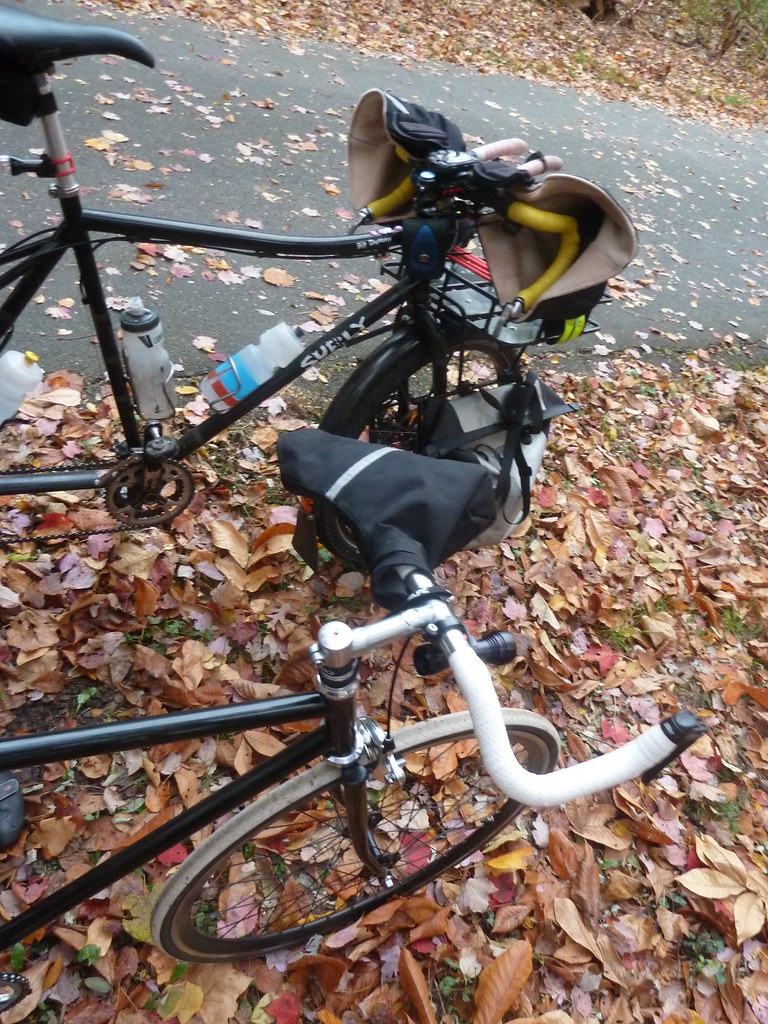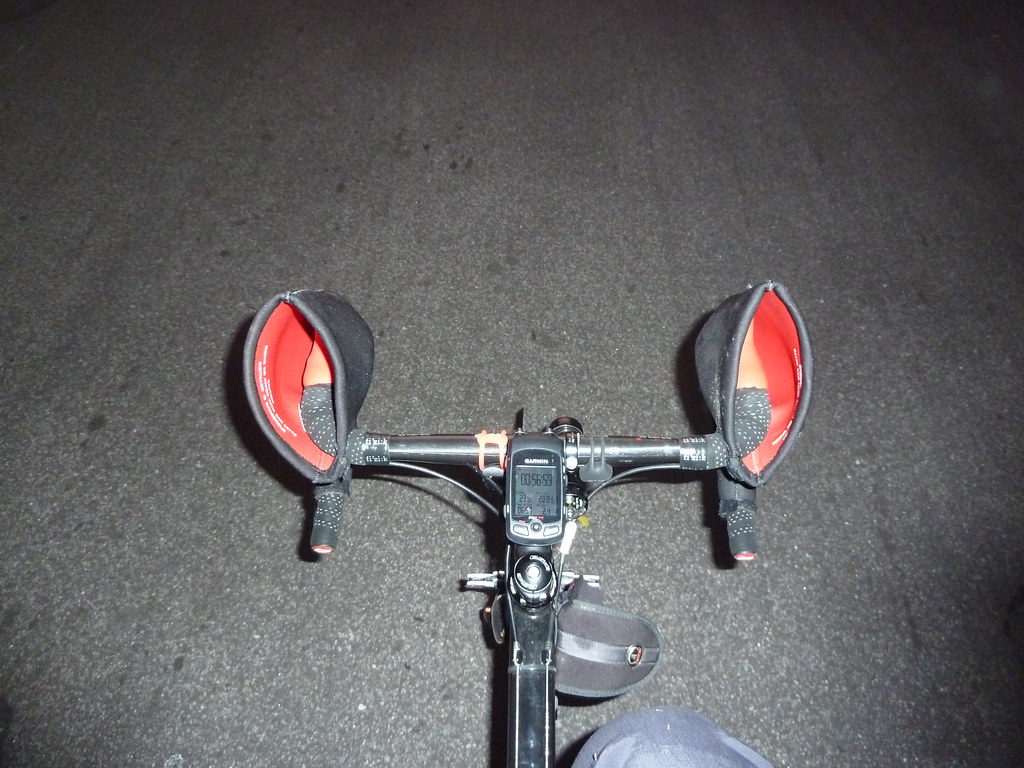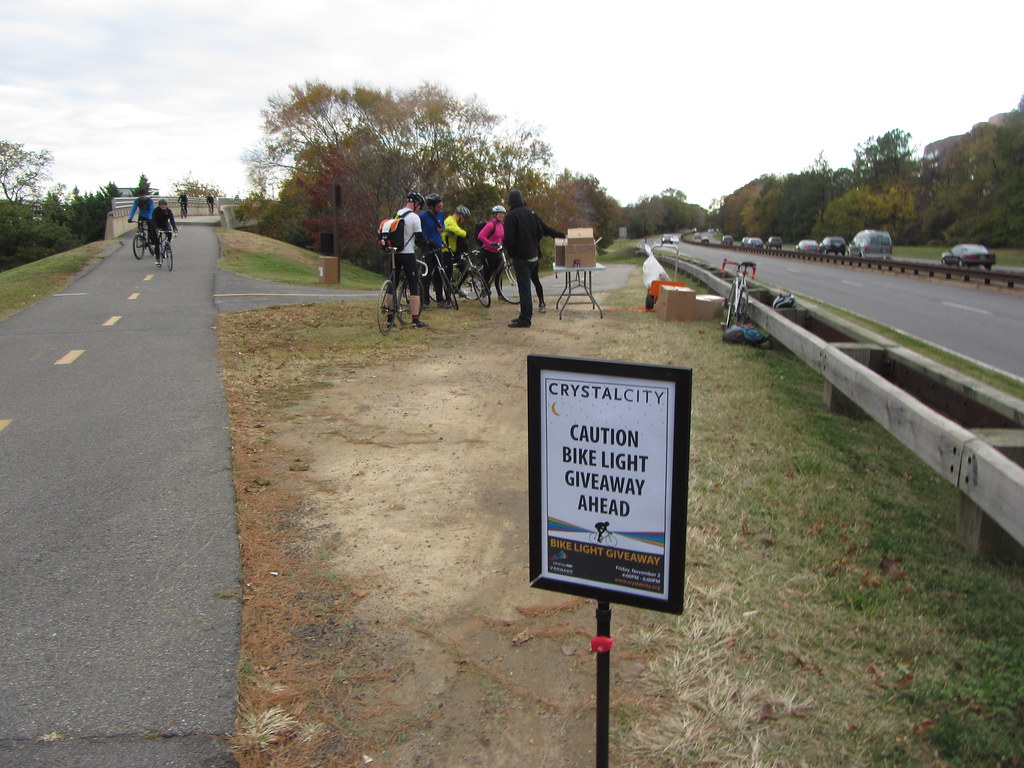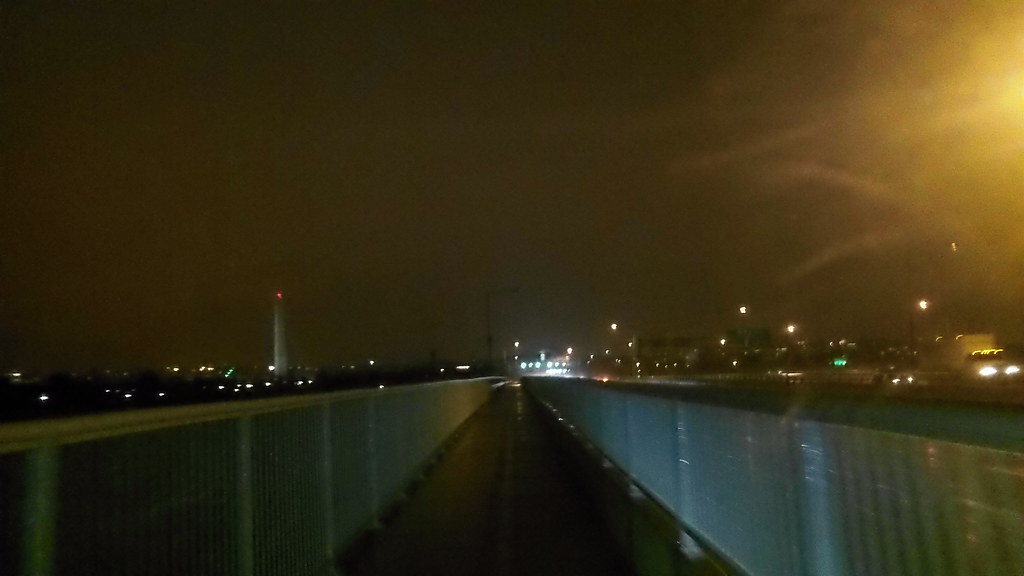Y'all may have read my post on the "No U-Turns on Penn" that I did about a month ago. Virtually on the month-aversary of that ride the Mayor announced changes to the motor vehicle code regarding U-turns across bike lanes that increase the penalty and should hopefully help with the issue.
Here's WABA's blog entry on it: http://www.waba.org/blog/2012/11/mayor-to-announce-new-regulation-making-u-turns-across-bicycle-lanes-illegal/
Which brings me back to one of the biggest challenges that any bicycle or transportation advocate has... Enforcement. Many of you who know me have heard my rants on enforcement, or lack there-of. I'll keep this short and sweet.
I firmly believe that a lot of the problems the DC area has between transportation groups (cyclists, drivers, pedestrians, people on pogo sticks) would be helped significantly, if not partially solved with better enforcement of existing laws on ALL OF US! None of us behave particularly well if there's visible reward for behaving badly and few/no visible consequences for doing so.
Bottom line: This is a good thing. Let's hope the momentum is enough to have this new code enforced.
Have a good weekend, y'all!
Pete
Friday, November 30, 2012
Thursday, November 29, 2012
My hands are cold!
Next in the series of entries on why we don't ride, I'd like to talk about an issue that I wish I had a quarter for every time I'd heard it. Which begs the question, How do we keep our hands warm?
Layers help. The Layers 101 post (http://lovemycommute.blogspot.com/2012/11/how-to-stay-warm-layers-101.html) gives the basics of the different kinds of layers. Those principles apply with keeping your hands warm too.
Liner gloves are thin, stretchy gloves that work great as a wicking layer. Fleece gloves work well for an insulating layer. Overmitts work great as a wind breaking layer. That combination of gloves can give you decent temperature range and let you ride DEEP into the winter for under $60. That, however, is not the way most cyclists ride through the winter.
Gloves seem to come more often in combination layers. Many winter gloves combine all three types of layers into one glove. That works well for many people, but doesn't really allow you to adjust well if conditions change during your ride. If it warms up a little, you either sweat or take off your gloves.
Since I ride all year, every year, I tend to collect a lot of different gloves. I buy a new pair every fall and then retire an old pair. That gives me a lot to mix and match as the years go by. I tend to avoid the winter cycling gloves that are designed for very cold weather because they end up, as I describe above, making me sweat then freeze.
What DOES work very well is having a mid-weight winter glove… something that I'd wear down into the mid to upper 40's, and when it gets colder, I'll add a fleece glove over the top of it. I have a few pairs of fingerless gloves that have a little mitten flap that can fold over the fingers for extra warmth. I have wool ones that I got at LL Bean when exchanging a Christmas gift last year. I have a fleece set that I got at a running store. If it is really cold, I use the mitten flap. When my hands warm up, I unhook the flap and my hands can breathe more. If it really warms up, I can take the fleece/wool gloves off and shove them in my jersey pocket.
When it really starts getting and staying cold, I bring out the big guns. When the morning commute is in the 20s or lower and the daytime highs don't get out of the low 40s, I use the Moose Mitts (http://www.trails-edge.com/retail/te_shirts/amfbikemits.htm). These are made by a little shop in Michigan and they are awesome. When it is 20 degrees out, I can wear a light glove inside them and my hands are toasty warm. When it is -20, I can drop chemical hand warmers into them and use a heavy glove.. perhaps with liners, and have a very good chance of keeping my hands warm. They come for either mountain bikes or road bikes (with drop bars). They are truly wonderful.
Impromptu Moose Mitt fitting session on the W&OD Trail.
There is a product called Bar Mitts (http://barmitts.com/), which are also nice. They're made of neoprene and keep your hands nice and warm. They have different ones for flat or drop bars, like the Moose Mitts. They don't allow as much flexibility with how you grab the bars. You're pretty much locked into using one hand position on the bars. They are very warm and comfy. They also work well with chemical hand warmers in them.
A semi-interesting note about the Bar Mitts. They have a warming label (obviously ignored for this photo) that warns that it is dangerous to ride no-hands with Bar Mitts installed.
Hopefully that helps in your quest to keep your hands warm.
Happy riding!
Pete
Saturday, November 24, 2012
How to stay warm: Layers 101
This may be a bit basic for folks, but I see tons of people getting it wrong, so I thought I’d write this up.
Layers are the key to keeping warm and dry. When we talk about layers, quality and type are MUCH more important than quantity of layers. More clothes is never the right answer unless you’re wearing the right KIND of clothes.
There are three kinds of layers: wicking, loft (insulation) and wind breaking.
Wicking layers transfer moisture away from your skin. They’re responsible for keeping you dry. They offer a bit of insulation too, but that is not their primary purpose. These are the first layers that you put on.
They can be as simple as an inexpensive base layer or synthetic long-underwear or as complex as high tech base layer where different zones of your body are covered with different thicknesses and textures of fabric to maximize warmth and moisture transfer. Wicking layers can be as cheap as a $8 technical t-shirt from Walmart or as expensive as $150 base layer.
Wicking layers can be used anywhere on your body. They exist for gloves, shirts, tights, socks and even hats.
For my core, I’ve had very good luck with inexpensive base layers made by a company called Verge. They can be found for as little as $8 for sleeveless tops. Like anything synthetic, they tend to trap odors after a while. At $8 each, it doesn’t hurt to recycle them after a year.
My favorite for this time of year are made of merino wool. They’re soft, warm and have a very wide temperature range. They cost $40-80 each and are made by a variety of manufacturers.
COTTON IS NEVER A GOOD WICKING LAYER! Cotton traps moisture and holds it. Once your body warms up, you'll start to sweat, then you'll freeze.
Loft or insulating layers provide insulation. They create dead air space between your outer layers and wicking layers. Moisture must transmit through, but their primary source is to hold your body heat in. Winter jerseys often have a little fleece on the inside to provide loft. Microfleece can work well for this. Some jackets (soft shells) have fleece in them too to add loft.
COTTON IS NEVER A GOOD INSULATING LAYER! Like I said above, it traps moisture and holds it. You warm up fast and then freeze fast.
Wind Breaking layers are meant to keep wind and wet out while allowing perspiration to leave. Seems simple, eh? It isn’t. If they don’t breathe well enough, it is very easy to overheat, sweat and soak yourself… thus causing a serious danger of freezing. Most simply, vents are holes in high temp areas under your arms or on your back to let sweat and some heat out. More complex venting can be done using fancy laminated fabrics that keep moisture out, but let your skin breathe. Gore-Tex is the one that comes to mind most readily, but there are many other fabrics on the market that do this. The best jackets, vests, pants, gloves use a combination of high tech fabrics and simple venting to balance keeping warmth in and getting/keeping moisture out.
Wind breaking layers can be as inexpensive as a simple nylon windbreaker or can cost hundreds and hundreds of dollars. Same with tights, pants and gloves.
You’ll notice I have been talking most about keeping my core (torso) warm. While the layers really apply to most places on the body, the key part that I concentrate on is keeping my core at the right temperature.
Combination Layers: There are wicking layers that have insulation. There are insulating layers with wind/water breaking panels. There are wicking layers with wind breaking layers. I use them from time to time.
Layers are the key to keeping warm and dry. When we talk about layers, quality and type are MUCH more important than quantity of layers. More clothes is never the right answer unless you’re wearing the right KIND of clothes.
There are three kinds of layers: wicking, loft (insulation) and wind breaking.
Wicking layers transfer moisture away from your skin. They’re responsible for keeping you dry. They offer a bit of insulation too, but that is not their primary purpose. These are the first layers that you put on.
They can be as simple as an inexpensive base layer or synthetic long-underwear or as complex as high tech base layer where different zones of your body are covered with different thicknesses and textures of fabric to maximize warmth and moisture transfer. Wicking layers can be as cheap as a $8 technical t-shirt from Walmart or as expensive as $150 base layer.
Wicking layers can be used anywhere on your body. They exist for gloves, shirts, tights, socks and even hats.
For my core, I’ve had very good luck with inexpensive base layers made by a company called Verge. They can be found for as little as $8 for sleeveless tops. Like anything synthetic, they tend to trap odors after a while. At $8 each, it doesn’t hurt to recycle them after a year.
My favorite for this time of year are made of merino wool. They’re soft, warm and have a very wide temperature range. They cost $40-80 each and are made by a variety of manufacturers.
COTTON IS NEVER A GOOD WICKING LAYER! Cotton traps moisture and holds it. Once your body warms up, you'll start to sweat, then you'll freeze.
Loft or insulating layers provide insulation. They create dead air space between your outer layers and wicking layers. Moisture must transmit through, but their primary source is to hold your body heat in. Winter jerseys often have a little fleece on the inside to provide loft. Microfleece can work well for this. Some jackets (soft shells) have fleece in them too to add loft.
COTTON IS NEVER A GOOD INSULATING LAYER! Like I said above, it traps moisture and holds it. You warm up fast and then freeze fast.
Wind Breaking layers are meant to keep wind and wet out while allowing perspiration to leave. Seems simple, eh? It isn’t. If they don’t breathe well enough, it is very easy to overheat, sweat and soak yourself… thus causing a serious danger of freezing. Most simply, vents are holes in high temp areas under your arms or on your back to let sweat and some heat out. More complex venting can be done using fancy laminated fabrics that keep moisture out, but let your skin breathe. Gore-Tex is the one that comes to mind most readily, but there are many other fabrics on the market that do this. The best jackets, vests, pants, gloves use a combination of high tech fabrics and simple venting to balance keeping warmth in and getting/keeping moisture out.
Wind breaking layers can be as inexpensive as a simple nylon windbreaker or can cost hundreds and hundreds of dollars. Same with tights, pants and gloves.
You’ll notice I have been talking most about keeping my core (torso) warm. While the layers really apply to most places on the body, the key part that I concentrate on is keeping my core at the right temperature.
Combination Layers: There are wicking layers that have insulation. There are insulating layers with wind/water breaking panels. There are wicking layers with wind breaking layers. I use them from time to time.
Tuesday, November 6, 2012
Bike Arlington Lights for Bikes
The end of daylight savings time always seems to catch some commuters by surprise. They may be used to riding in the dark in the morning, but the switch to riding home in the dark seems to come as a surprise to some. The amazing people at Bike Arlington (www.bikearlington.com) realize this and schedule events that help people be visible and safe when they're riding.
Monday was the first Lights for Bikes event of the season. We set up at the intersection of Lynn Street and the Mount Vernon Trail near Key Bridge in Rosslyn, VA. The goal is to help cyclists, runners and pedestrians be visible to each other and to cars. Visibility is a HUGE part of being safe.
We gave away and installed hundreds of sets of lights… they are little flashy lights, red for the back and white for the front, that really do a great job of making a people visible. The cool thing is that they also work very well when attached to strollers, dogs and running shoes. In addition to this, we gave out information on riding safely and where to get more serious lights that will also help you see the road ahead of you.
Reflective clothing is a big part of being visible. Bike Arlington gave away reflective leg straps that not only help you be visible, but also keep your pants out of your chain. Reflective bike vests were being given out to take visibility to the next level. You'll hear me talking about visibility a lot in this blog. It is one of the biggest problems that cyclists have when commuting at night.
This year was much better for the Lights for Bikes than last! There will always be people who try to ride past and have no interest in being visible… even when it is free. Last year there were 30 or 40 who were much more intent on riding past, sometimes being quite rude about it. This is understandable in some ways. Some cyclists tend to be in their zone and don't want to be bothered. When there's a big group of people taking up the trail installing lights, I can see how they would be very intent on getting through and on their way home.
The cool thing this year was that I really only saw 3 or 4 people who were more intent on getting through the light than stopping to get free lights. There were some folks who said they didn't need the lights… and they all were well lit and reflective.
Bike Arlington is definitely not the only group that is doing this. WABA is doing their "Got Lights?" promotion through their bike ambassadors over the next few weeks. The Crystal City Business Improvement District did a bike light give-away last week on the Mount Vernon trail. You'll hear more about those as they happen. :D
Have a great week. Be seen!
Pete
Monday was the first Lights for Bikes event of the season. We set up at the intersection of Lynn Street and the Mount Vernon Trail near Key Bridge in Rosslyn, VA. The goal is to help cyclists, runners and pedestrians be visible to each other and to cars. Visibility is a HUGE part of being safe.
We gave away and installed hundreds of sets of lights… they are little flashy lights, red for the back and white for the front, that really do a great job of making a people visible. The cool thing is that they also work very well when attached to strollers, dogs and running shoes. In addition to this, we gave out information on riding safely and where to get more serious lights that will also help you see the road ahead of you.
Reflective clothing is a big part of being visible. Bike Arlington gave away reflective leg straps that not only help you be visible, but also keep your pants out of your chain. Reflective bike vests were being given out to take visibility to the next level. You'll hear me talking about visibility a lot in this blog. It is one of the biggest problems that cyclists have when commuting at night.
This year was much better for the Lights for Bikes than last! There will always be people who try to ride past and have no interest in being visible… even when it is free. Last year there were 30 or 40 who were much more intent on riding past, sometimes being quite rude about it. This is understandable in some ways. Some cyclists tend to be in their zone and don't want to be bothered. When there's a big group of people taking up the trail installing lights, I can see how they would be very intent on getting through and on their way home.
The cool thing this year was that I really only saw 3 or 4 people who were more intent on getting through the light than stopping to get free lights. There were some folks who said they didn't need the lights… and they all were well lit and reflective.
Bike Arlington is definitely not the only group that is doing this. WABA is doing their "Got Lights?" promotion through their bike ambassadors over the next few weeks. The Crystal City Business Improvement District did a bike light give-away last week on the Mount Vernon trail. You'll hear more about those as they happen. :D
Have a great week. Be seen!
Pete
Riding through Hurricane Sandy
Random Co-Worker: "Tell me you didn't ride to work today!?!?!?
Me: "I didn't ride to work today." (With an obedient look on my face.)
RCW: "You're lying!!!"
Me: "Yup!"
That Conversation happens a few times per day, every time there's any kind of bad weather. The one exception to that was the Tuesday after Hurricane Sandy. It wasn't that the storm had eased much or that I didn't ride to work. It was that I was the only person in the office.
Is that safe? Is it wise? Yes and no. Riding through anything without consideration for safety obviously isn't wise. There ARE conditions in which I will choose not to ride. Monday, at the height of the storm was one of those times. Driving rain and winds gusting to 60mph isn't safe to ride…. though I did go out for a few minutes on the mountain bike just for grins.
By Tuesday, the rain was as hard as ever, but the winds had dropped to 20-30mph. There was no-one else on the roads or trails. I had plenty of light, plenty of reflective gear and many years riding in all kinds of weather. I also had no power or internet at home and a lot of work to get done.
How do you ride safely in bad weather? Practice, practice, practice!!! The key is to start riding in light rain storms to get the feel for how the bike handles and what it feels like. This teaches you to learn your route… You need to know where you can find cover and safety if things get bad quickly. You also learn what your bike does in water, mud, wet leaves, snow or ice. You need to learn what equipment works too. I'll certainly talk about that stuff in future posts.
What should you watch out for when preparing for your ride? Check the radar and weather report. Often the leading edge of a storm has a rather severe squall line with high winds, lightning and heavier rains. Let that pass before you start your ride. Get a feel for what the seasonal storms are like before you attempt going out into a storm. Lightning, flooding and hail are three things you really want to avoid at all costs. If any of those things are in the forecast, then we're all probably a lot safer staying in.
Be safe and wise and have fun. :D
Pete
Me: "I didn't ride to work today." (With an obedient look on my face.)
RCW: "You're lying!!!"
Me: "Yup!"
That Conversation happens a few times per day, every time there's any kind of bad weather. The one exception to that was the Tuesday after Hurricane Sandy. It wasn't that the storm had eased much or that I didn't ride to work. It was that I was the only person in the office.
Is that safe? Is it wise? Yes and no. Riding through anything without consideration for safety obviously isn't wise. There ARE conditions in which I will choose not to ride. Monday, at the height of the storm was one of those times. Driving rain and winds gusting to 60mph isn't safe to ride…. though I did go out for a few minutes on the mountain bike just for grins.
By Tuesday, the rain was as hard as ever, but the winds had dropped to 20-30mph. There was no-one else on the roads or trails. I had plenty of light, plenty of reflective gear and many years riding in all kinds of weather. I also had no power or internet at home and a lot of work to get done.
How do you ride safely in bad weather? Practice, practice, practice!!! The key is to start riding in light rain storms to get the feel for how the bike handles and what it feels like. This teaches you to learn your route… You need to know where you can find cover and safety if things get bad quickly. You also learn what your bike does in water, mud, wet leaves, snow or ice. You need to learn what equipment works too. I'll certainly talk about that stuff in future posts.
What should you watch out for when preparing for your ride? Check the radar and weather report. Often the leading edge of a storm has a rather severe squall line with high winds, lightning and heavier rains. Let that pass before you start your ride. Get a feel for what the seasonal storms are like before you attempt going out into a storm. Lightning, flooding and hail are three things you really want to avoid at all costs. If any of those things are in the forecast, then we're all probably a lot safer staying in.
Be safe and wise and have fun. :D
Pete
Subscribe to:
Posts (Atom)





